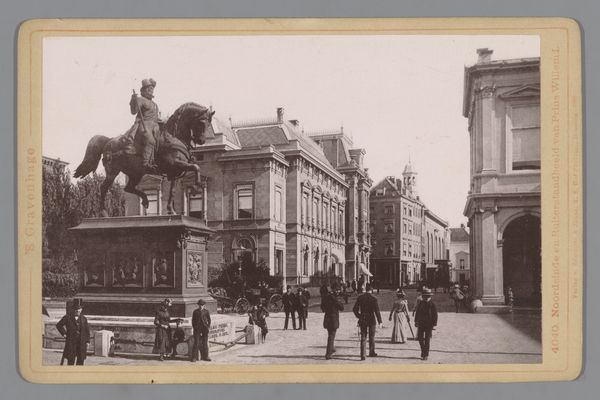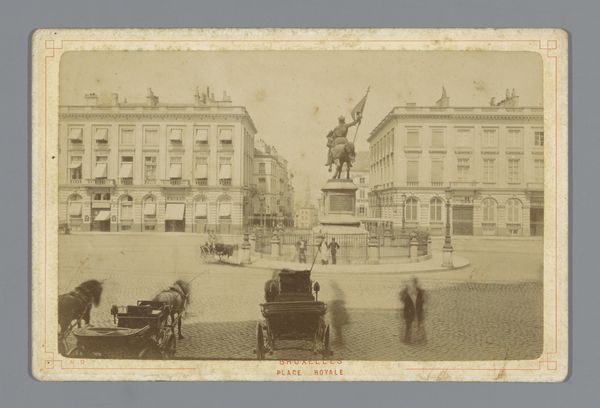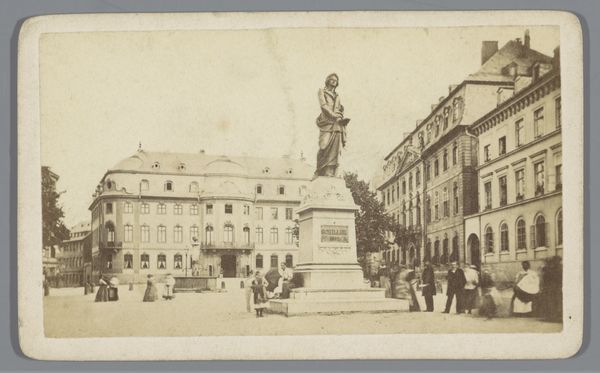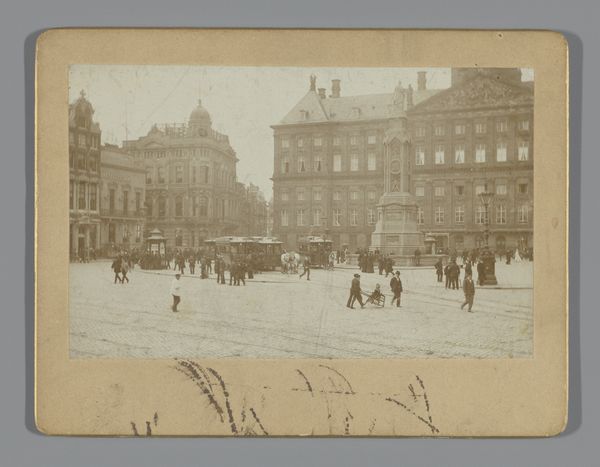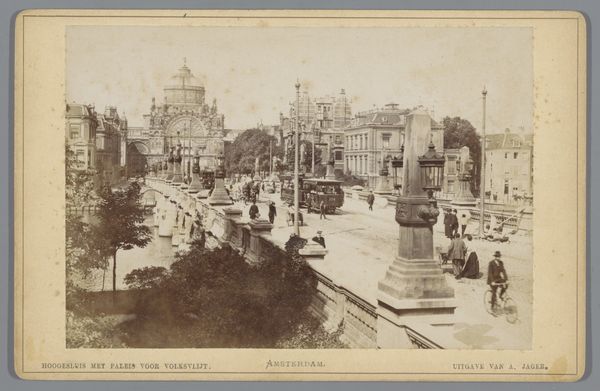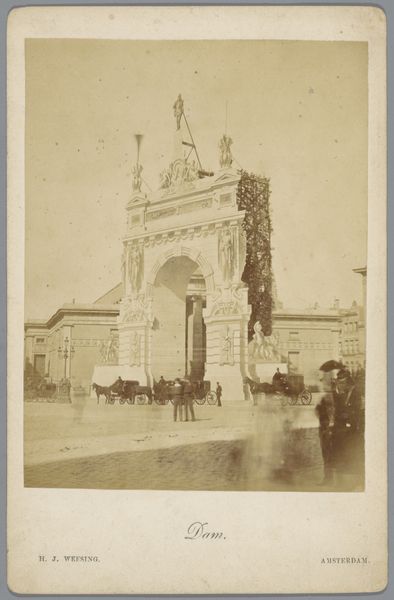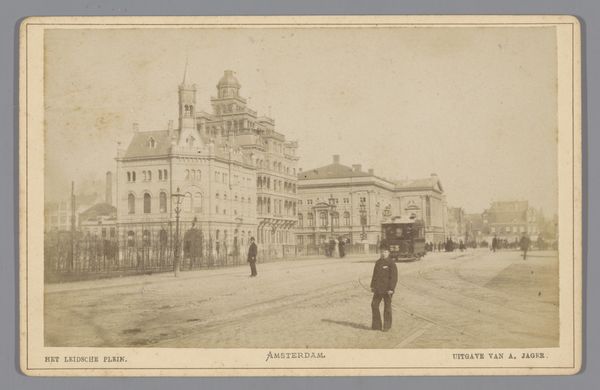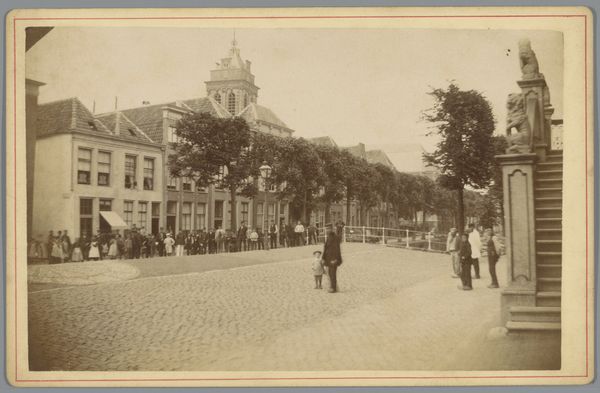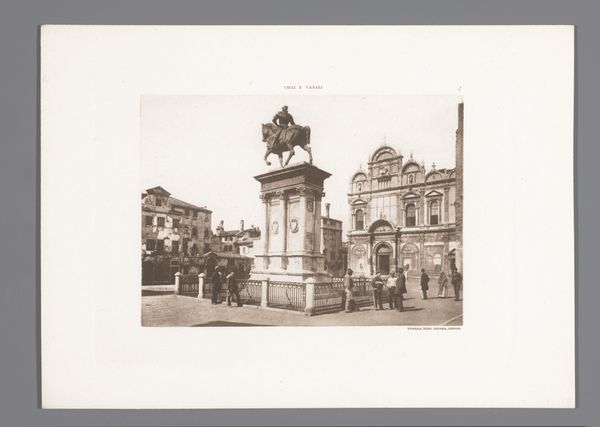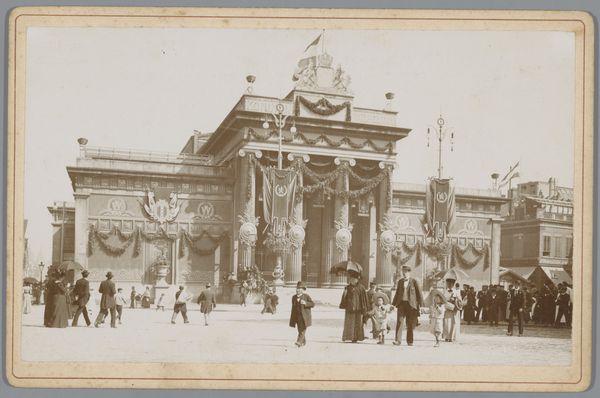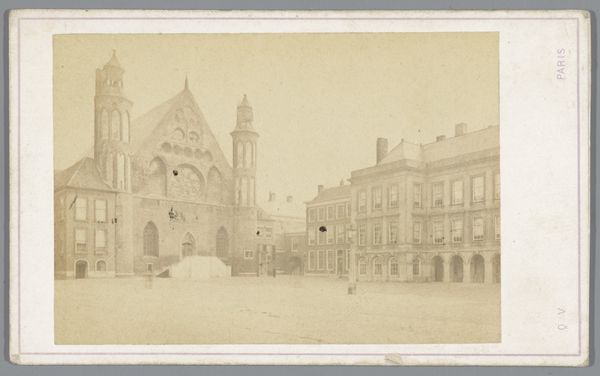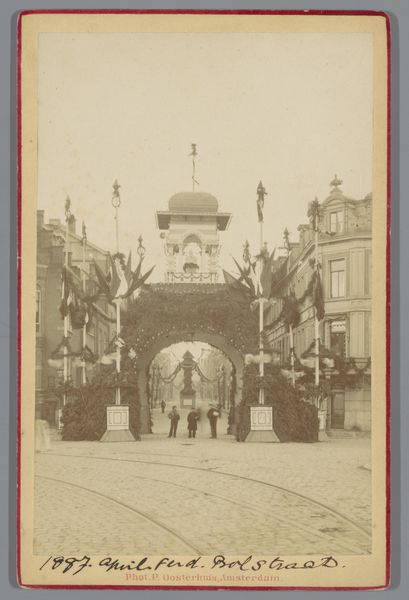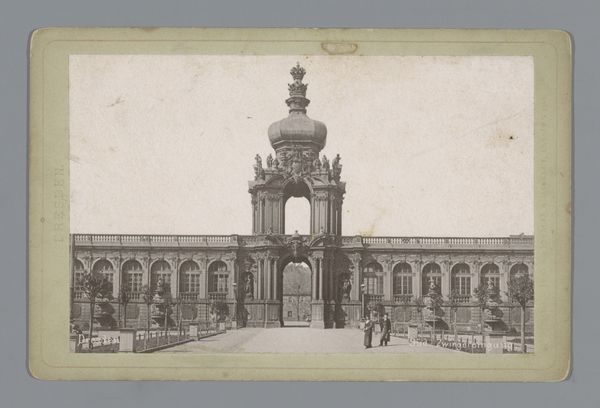
print, photography
# print
#
german-expressionism
#
street-photography
#
photography
#
coloured pencil
#
cityscape
Dimensions: height 109 mm, width 167 mm
Copyright: Rijks Museum: Open Domain
Editor: Here we have Louis Koch's "Gezicht op de Bremer Marktplatz," a photograph printed sometime between 1880 and 1900. It’s striking how this everyday scene is composed; it almost feels like a formal portrait. What’s your take? Curator: This image compels us to consider photography not just as representation, but as a commodity. Consider the photographic process itself at this time: the cost of equipment, the darkroom skills required, and the social context. This isn't just a snapshot; it’s a product created within specific material and economic conditions. Who could afford this image, and what purpose did it serve them? Editor: So, you're suggesting that we look beyond the aesthetics to understand its creation and consumption? Curator: Precisely. We must examine the labor involved – the photographer’s time, the materials used – alongside the burgeoning tourism industry and the rising middle class’ desire to possess these "views." Does that not impact the visual choices in the photo? What does the printing quality suggest about access, distribution, and its perceived value? Editor: That reframes my initial view entirely! I was focusing on the people posed in the square and the architectural details. Now, I'm considering the production chain that put this image into someone's hands. The commodification of the cityscape… I hadn't thought about that. Curator: The way this was produced gives us invaluable insights into the period's social stratification and evolving relationship with image-making. How can art create change? Editor: So, this photo isn’t just of a marketplace, but also *part* of that marketplace, a transaction in itself. Fascinating! Curator: Indeed. Thinking of it as a produced artifact reveals the connections between art, labour and everyday life.
Comments
No comments
Be the first to comment and join the conversation on the ultimate creative platform.
